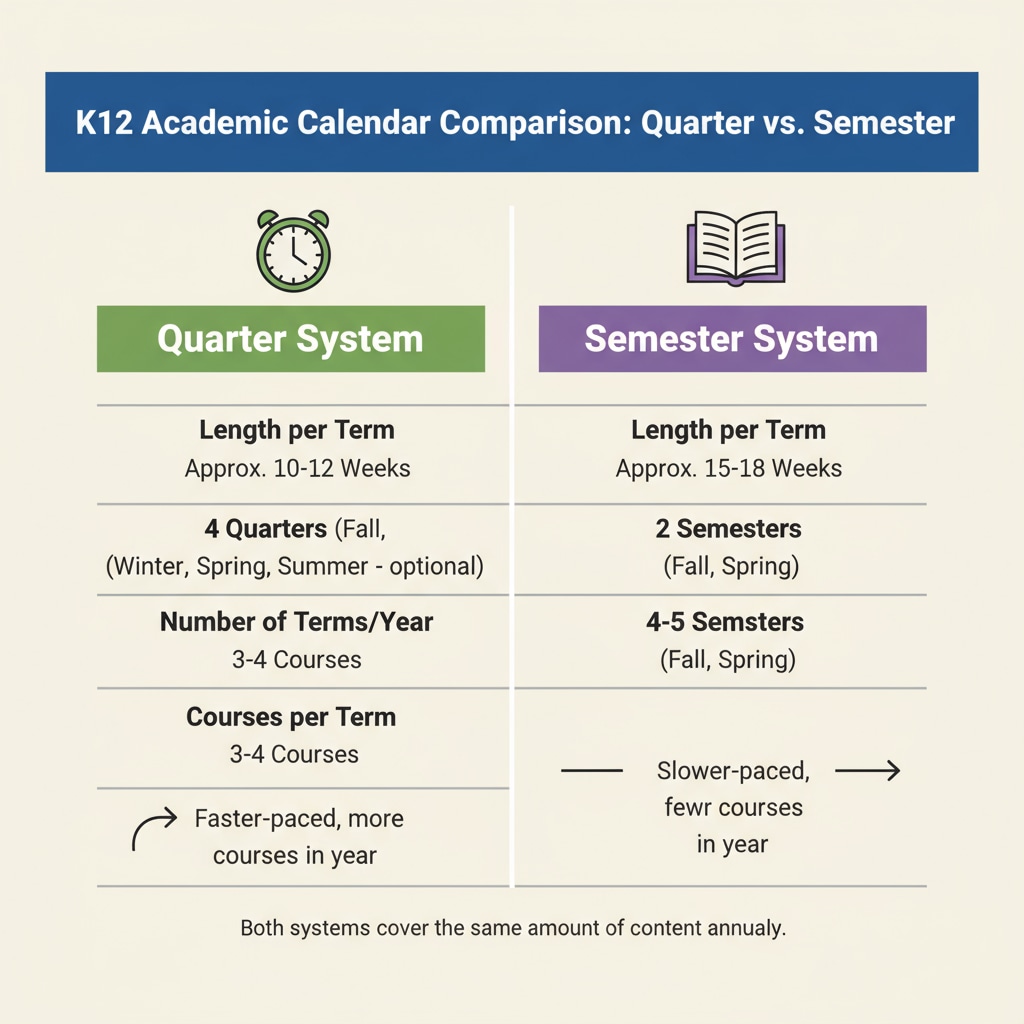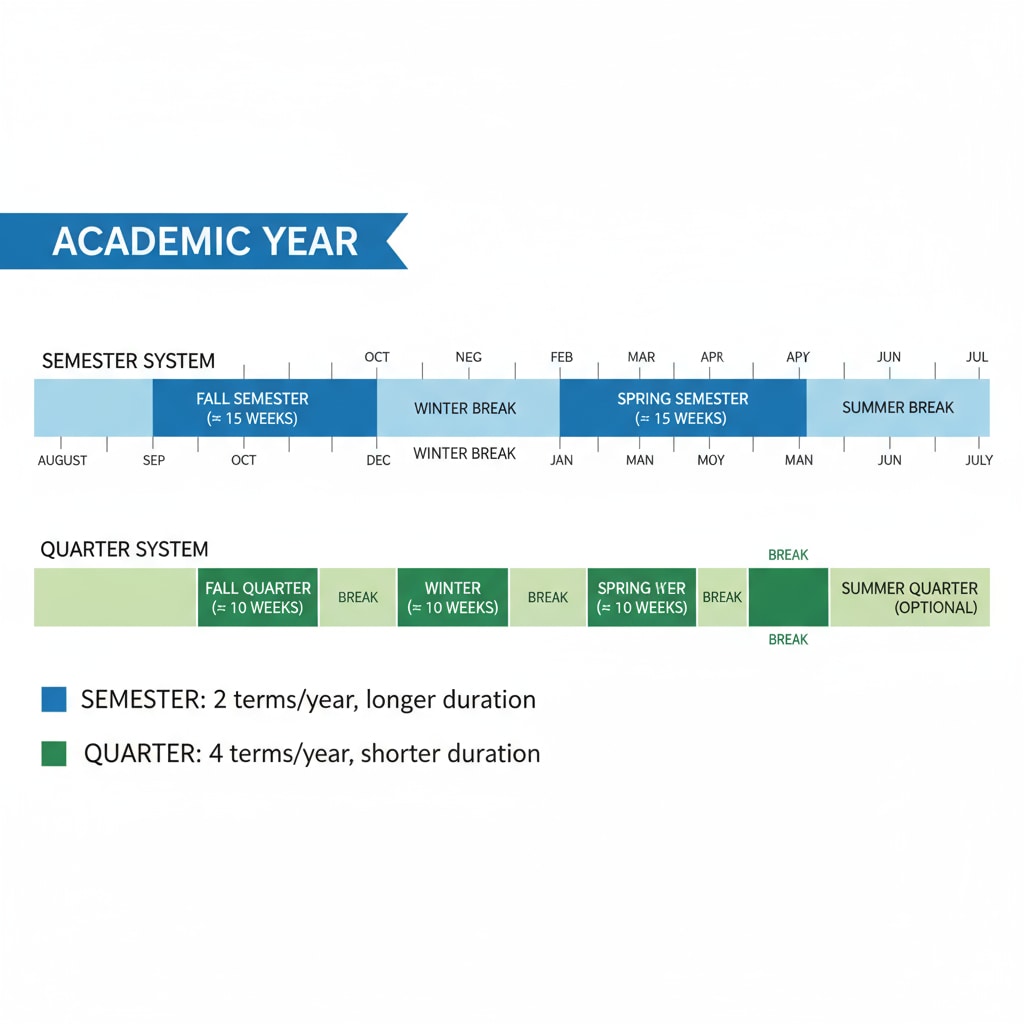The quarter system and the semester system in K12 education significantly influence students’ learning attention, time management, and knowledge absorption. Understanding these differences can help educators and parents make better decisions for students’ development.

The Basics of Quarter and Semester Systems
The quarter system divides the academic year into four quarters. Each quarter is relatively short, usually lasting around 10 weeks. This means students take more courses in a year but spend less time on each one. In contrast, the semester system divides the academic year into two semesters, each about 15 – 18 weeks long. Students typically take fewer courses per semester. Academic term information on Wikipedia

Impact on Learning Attention
In the quarter system, due to the shorter duration of each course, students need to maintain high learning attention from the start. The fast pace means there’s little time to get distracted. However, in the semester system, the longer time frame allows students to gradually build up their attention. They have more time to adjust to the course rhythm but also risk losing focus over the long period. For example, in a quarter – based math class, students must be constantly engaged to keep up with the rapid progress. Education concepts on Britannica
Readability guidance: As seen, different academic systems have distinct impacts on students’ learning attention. The quarter system demands immediate focus, while the semester system offers more room for adjustment but also has its challenges in maintaining attention.
Time Management and Knowledge Absorption
With the quarter system, students face intense time management. They need to quickly adapt to new courses and complete assignments in a short time. This can enhance their short – term time management skills. In terms of knowledge absorption, the quick turnover might lead to surface – level understanding if not managed well. In the semester system, students have more time for in – depth study and can better integrate knowledge. They can engage in long – term projects and research, which aids in a more comprehensive understanding. For instance, a semester – long science project allows students to explore a topic thoroughly.
Readability guidance: Clearly, the two systems have different implications for students’ time management and knowledge absorption. Educators and parents should consider these factors when evaluating the best fit for students.
In conclusion, the quarter system and the semester system each have their own advantages and disadvantages when it comes to students’ learning attention, time management, and knowledge absorption. By understanding these differences, educators and parents can make more informed decisions to support students’ academic growth.


